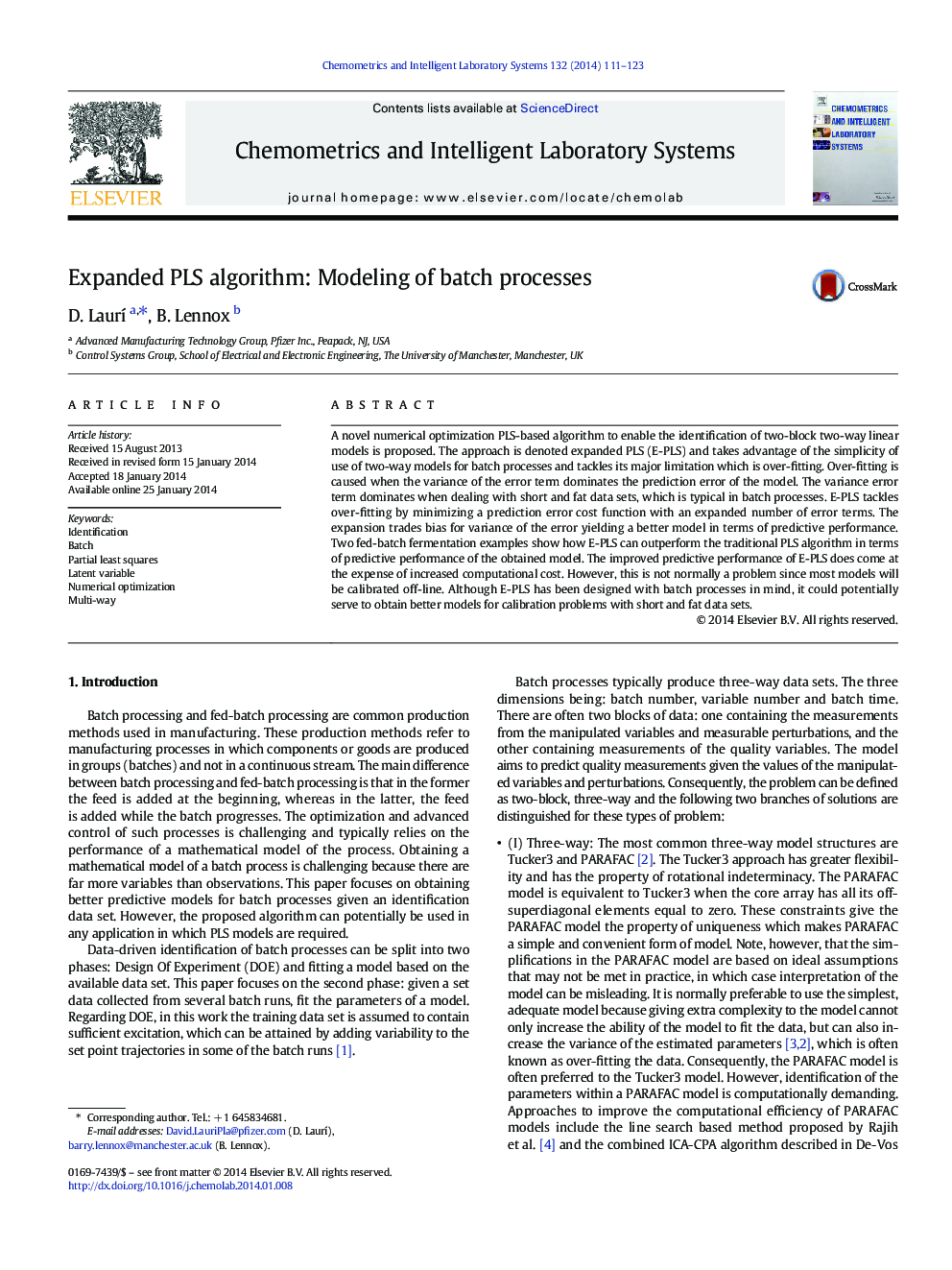| Article ID | Journal | Published Year | Pages | File Type |
|---|---|---|---|---|
| 1179459 | Chemometrics and Intelligent Laboratory Systems | 2014 | 13 Pages |
•We propose a novel identification strategy for batch processes denoted EPLS.•EPLS expands the sample space to reduce the variance error term of the obtained model.•The strategy combines PLS with line search numerical optimization.•EPLS considerably outperforms PLS in terms of prediction error in the examples analyzed.
A novel numerical optimization PLS-based algorithm to enable the identification of two-block two-way linear models is proposed. The approach is denoted expanded PLS (E-PLS) and takes advantage of the simplicity of use of two-way models for batch processes and tackles its major limitation which is over-fitting. Over-fitting is caused when the variance of the error term dominates the prediction error of the model. The variance error term dominates when dealing with short and fat data sets, which is typical in batch processes. E-PLS tackles over-fitting by minimizing a prediction error cost function with an expanded number of error terms. The expansion trades bias for variance of the error yielding a better model in terms of predictive performance. Two fed-batch fermentation examples show how E-PLS can outperform the traditional PLS algorithm in terms of predictive performance of the obtained model. The improved predictive performance of E-PLS does come at the expense of increased computational cost. However, this is not normally a problem since most models will be calibrated off-line. Although E-PLS has been designed with batch processes in mind, it could potentially serve to obtain better models for calibration problems with short and fat data sets.
